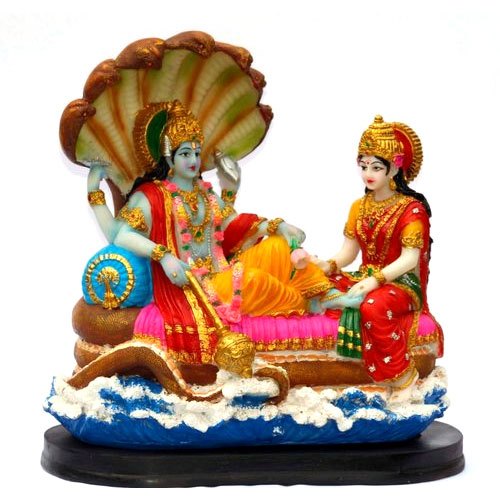“Vyaasaaya vishnu roopaaya vyaasa roopaaya vishnave!
Namo vai brahma nidhaye vaashishtaaya namo namaha!!”
A very warm welcome to all our esteemed readers to our fourth new mega project – Shri Vishnu Purana! As we had witnessed in the Shrimad Bhaagawatha Puraana till yesterday, the lineage of great Sages who incarnated in our esteemed Bhaarata Desha commences from Bhagawan Brahma Himself. If we’ve to have a glimpse of it, Bhagawan Brahma had a son by the name Sage Vasishta. Sage Vasishta’s son was Sage Shakti. Sage Shakti had a son who is none other than Sage Paraashara. As we might be familiar, Sage Paraashara had a son by name Sage Vyaasa, whom we refer to commonly as Veda Vyaasa. Sage Veda Vyaasa had a son by name Sage Sukhaachaarya, whose Shrimad Bhaagawatha Puraana text has been discussed by us in detail in the previous project. We’ve enjoyed the contents of this rich text for the past 423 days. Now moving on further from this, we shall now experience what Sage Sukhaachaarya’s father, Sage Paraashara had authored. This is none other than the great Vishnu Puraana. Amongst all the “Puraanas” that exist as part of our Sanaatana Dharma Literature, Shri Vishnu Puraana occupies a special place and is revered to be one of the key texts. Whichever Puraana text it might be, including the Shrimad Bhaagawatha Puraana, the ultimate content and deeper meaning attached to each of these texts is the subtle “Vedanta” of our Sanaatana Dharma. There might be innumerable number of messages that the “Vedanta” would try and convey, but someone should “walk the talk” and make us understand the real meaning of these messages, isn’t it? This is where we have various Maharishis (Sages), Aachaaryas (Spiritual Masters), etc. who incarnate in this world time and again, so as to illustrate and teach people like us, these important messages of Vedanta. In fact, the texts that comprise of various documentations of how these great “Maharishis” and Spiritual Masters followed the principles of Vedanta are nothing but the “Puraanas”.
We can witness a small analogy to understand this point – Just like how we go to a doctor if we fall sick, and just like how we’ve to take some medicines that are bitter in taste, and injections that are painful, so as to get cured of our physical disease, we have the messages from the “Vedanta” which are like these medicines and injections. At times, certain messages might be “painful” and “bitter” for us to understand and comprehend. This is where, in medicines too nowadays we have capsules in different flavors like mango, chocolate, etc. and within the capsule, the real bitter medicine is embedded. Similarly, in Vedanta too, we have a “storyline” like a capsule and inside this storyline we have all the important messages of Vedanta embedded into it. This combination of a storyline (or multiple storylines put together) and the corresponding messages of Vedanta closely knit with each other, are referred to as “Ithihaasas” and “Puraanas”. Thus, we can understand here that as we’re enjoying the storyline here, we’re also slowly grasping the important messages of Vedanta, which is extremely important for our peaceful lifestyle in this world, and also serves as a medicine for us to reach the highest “Moksha”.
As we know by now, the “Puraanas” are eighteen in number – Six Puraanas classified under the “Satvika Puraanas”, the next six classified under the “Raajasa Puraanas” and the final six as “Taamasa Puraanas”. The first and foremost of the six “Satvika Puraanas” is none other than Shri Vishnu Puraana. So for today, let us understand and recollect these important messages, and let us wait till the next episode to witness the structure of Shri Vishnu Puraana, as we move forward! Stay tuned! 🙂

